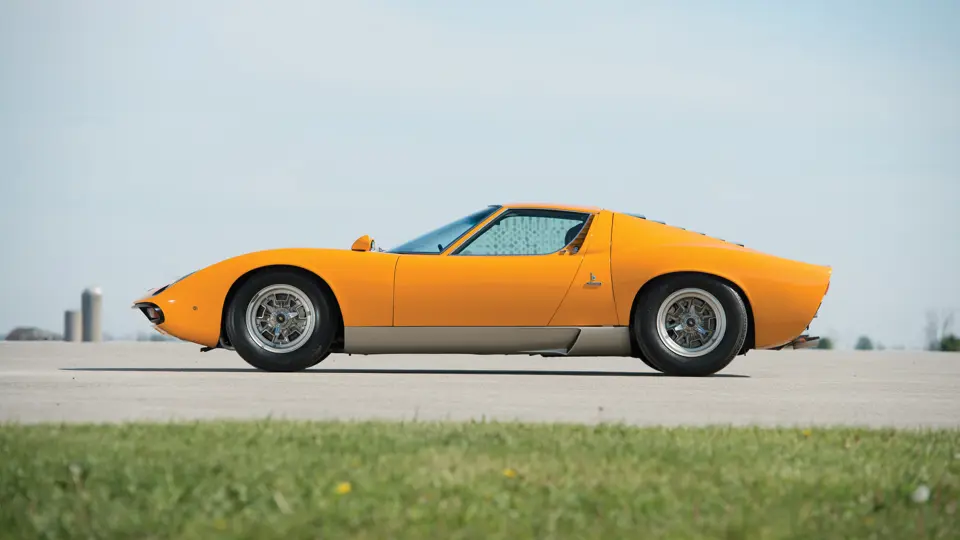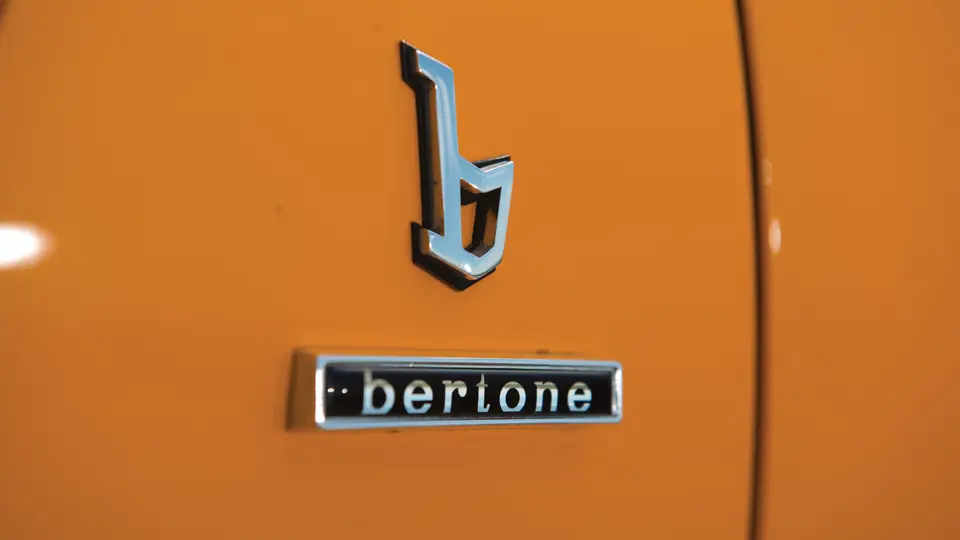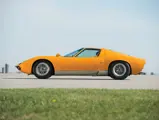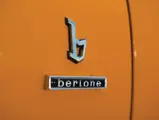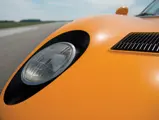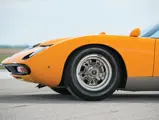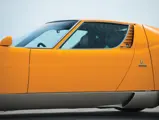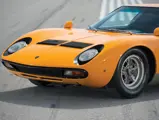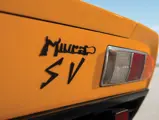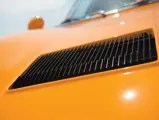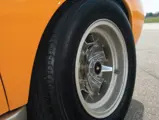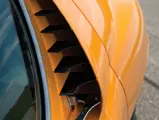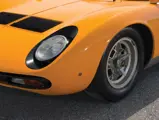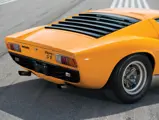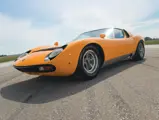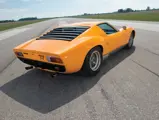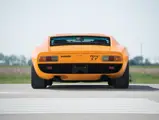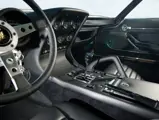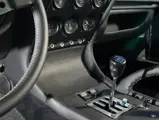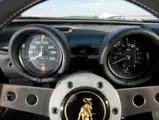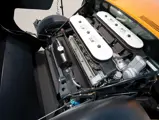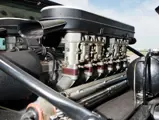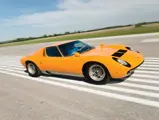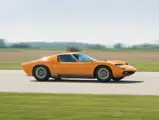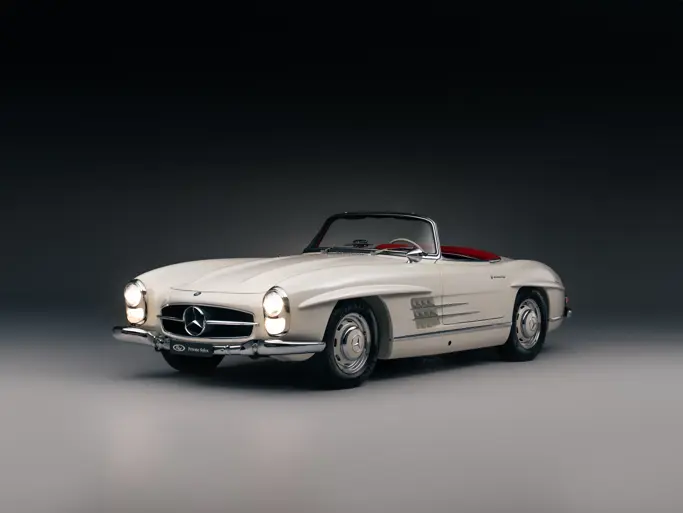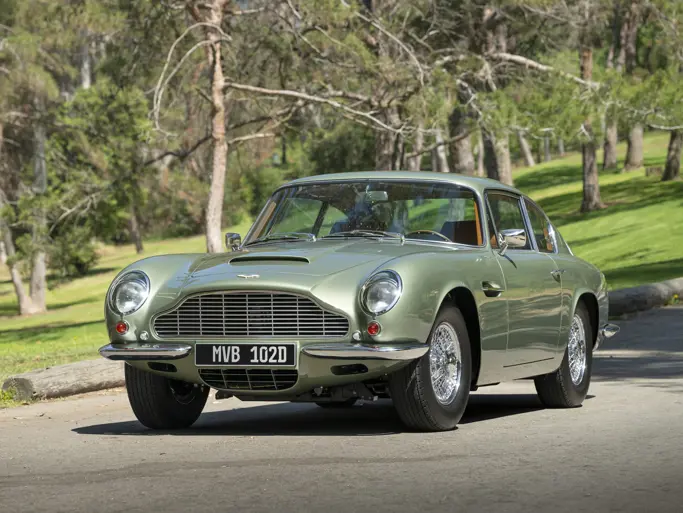
1971 Lamborghini Miura SV by Bertone
{{lr.item.text}}
$2,090,000 USD | Sold
{{bidding.lot.reserveStatusFormatted}}
- A genuine Miura SV that has been beautifully restored
- Best in Class winner at The Quail in 2009
- Recent servicing and mechanical overhaul
- An exceptional example of “the original supercar”
385 bhp, 3,929 cc transverse mid-mounted alloy DOHC V-12 engine, Weber twin-choke carburetors, five-speed manual gearbox, independent front and rear suspension with A-arms, coil springs with tubular shocks, and anti-roll bars, and four-wheel hydraulic disc brakes. Wheelbase: 98.42 in
The first “supercar” from Lamborghini, and perhaps the first supercar the world had ever seen, was the P400 Miura, and when it was first unveiled at the 1966 Geneva Salon, its impact was nothing short of extraordinary. Simply stated, the Miura looked like nothing else on the road, and it marked a paradigm shift in the design of high-performance cars. Its sensuous lines were undoubtedly indebted to the placement of its engine, which was mounted transversely, just behind the passenger compartment. The Miura’s performance matched its looks, and the car would go on to be the poster child for a petrol-fueled generation. As such, Miuras could often be found in the garages of many of the most fashionable celebrities of the day, including Miles Davis, Rod Stewart, and Frank Sinatra.
Marcello Gandini penned the gorgeous design at the age of 27, and it beautifully encapsulated the youthful spirit of the age. The car was beautifully styled throughout, with intricate details that would always bring a smile to the driver’s face when interacting with the car, such as the shape of the doors, which were supposedly modeled off of the horns of a raging bull. To many, it boasted the perfect automotive silhouette, as it was just as muscular as it was sensual.
The final iteration of the Miura, the SV, featured numerous changes over the already spectacular P400S that came before it. The SV featured improved handling, thanks to a slightly revised suspension, which helped to remove the “front-end lightness” so characteristic of the earlier cars; in turn, the rear bodywork was made slightly wider. Perhaps the most notable changes were to the engine, which featured lager carburetors and slightly different cam-timing, as they made the SV much more user-friendly at lower rpms. With its engine producing 385 brake horsepower, the SV boasted incredible performance. A sprint to 60 mph from a standstill took just 5.8 seconds, and its top speed was quoted at 180 mph.
This particular Miura SV was built on September 22, 1971, during the first year of SV production, which saw a total production of 70 models. A few weeks later, on October 8, it was delivered new, wearing Giallo Miura and a black interior, to German Lamborghini importer H. Hahn. Following its delivery to H. Hahn, it is believed that the car travelled directly to Japan, where it remained for over 30 years and was later featured in a 2004 issue of Japanese magazine Supercars for a track test.
Following the publication of the article, chassis number 4942 found its way to a new owner, who commissioned a full restoration. Partially through the restoration process, after the engine and transmission had been removed and the paint stripped from the body, the car was painted orange, but unfortunately, the paint was improperly cured and the finished was ruined as a result. At that point, the restoration was halted, and in 2007, the car was sold “as is” to a Rancho Santa Fe collector, who decided to continue with the restoration. The interior was found to be mostly intact, with black leather seats with blue inserts and a black vinyl dash. The paint was stripped once more, and the original color, a deep yellow that shines almost orange, was found in the door jams; thus, the car was repainted in that color.
The subsequent full rebuild that followed took more than a year to complete, and it was documented with over 400 photos. The chassis was found to be rust free, and the engine was confirmed, according to information provided in Joe Sackey’s book, The Lamborghini Miura Bible, as the original unit that was delivered with the car, which had been rebuilt from the ground up, along with the ZF five-speed transmission, the limited-slip differential, the Girling ventilated disc brakes, and the suspension. The electric system was replaced with new components, and the interior was upgraded to full leather, not just on the seats, which was an option when the car was new. Additionally, the car sits on its original Campagnolo magnesium wheels, which are wrapped in Avon tires.
This Miura has resided with its current owner in Toronto since 2010, and it benefits from a recently completed full rebuild of the engine, carburetors, and transmission by Lamborghini specialists. At the same time, the exhaust was properly cleaned and ceramic coated, the main radiator pipe was replaced and the radiator was recored, and the gas tank was removed, fully cleaned, and restored. At this time, a heavy-duty battery was installed, with a battery cut-off switch, and a second switch was installed to cut off the fuel pump, so the carburetors can be completely drained of fuel before storage.
Also, all the wiring components were inspected and rectified.
Following the completion of the rebuild, the car has been driven nearly 1,000 kilometers, and the owner reports that it runs beautifully. The full-leather interior is in wonderful condition, and upon opening the glove box, a small sheet of paper can be found within, which lists the date and mileage of the car’s every outing with its current owner. In addition to all of the receipts from its engine rebuild, which total to $137,000, the car is documented by a complete photo album, which documents its previous restoration, and its original owner’s manual.
The Miura boasts one of the most iconic automotive silhouettes the world has ever seen, and it is a landmark automobile for what it brought to the entire industry: fantastic performance, brilliant looks, and an incredible sense of style. Had Marcello Gandini never put his pen to paper to design the Miura while at Bertone, there’s no telling where automotive design would be today, as so many cars that followed lend facets of their design to this Raging Bull. This Miura SV still remains in incredible condition following its full restoration, and it is a beautiful representation of the final iteration of the Miura. It would be ideal for the individual looking to finally own the car that once was, or still is, on a poster on his bedroom wall.
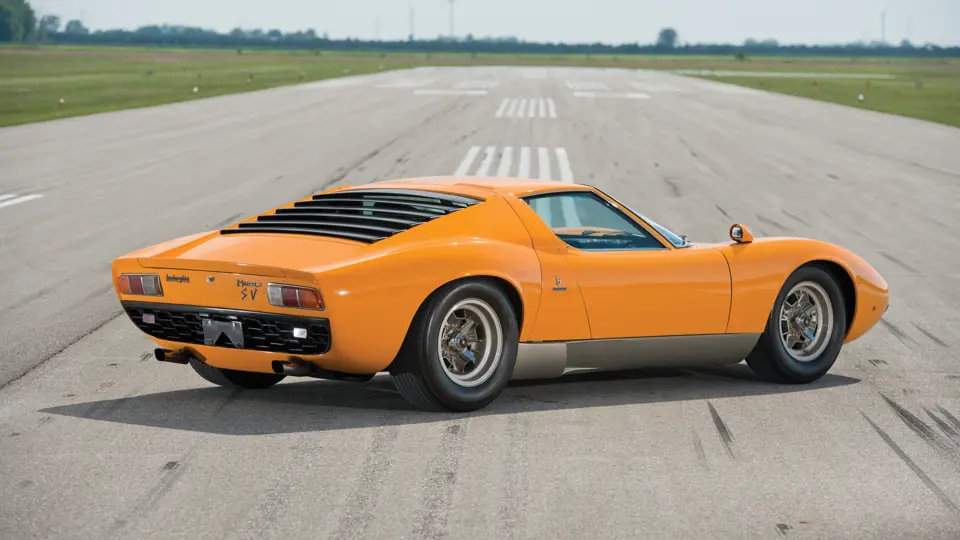








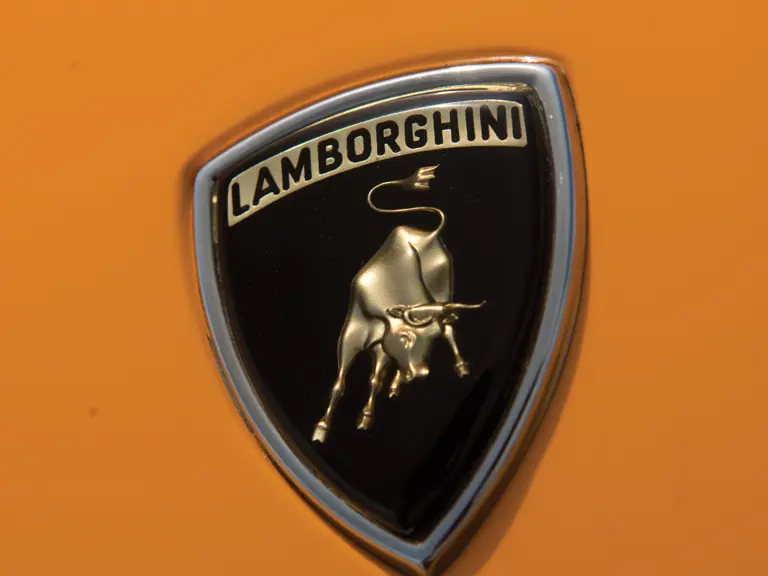



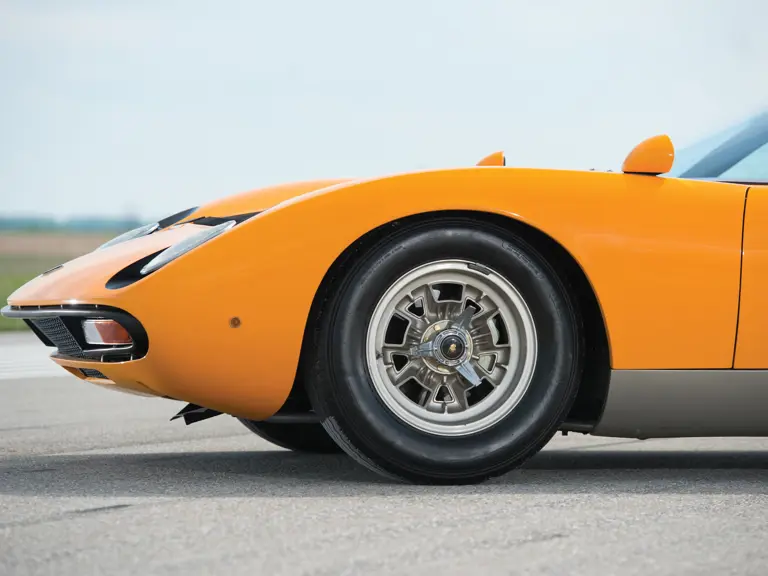
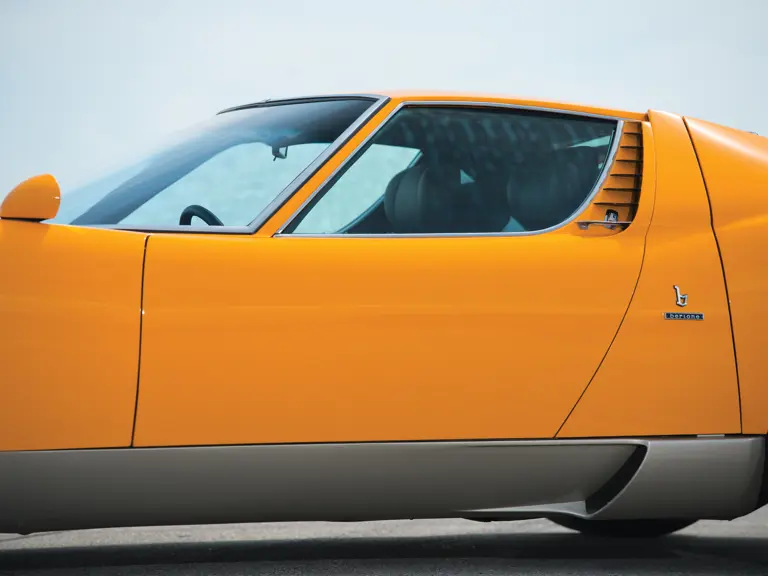
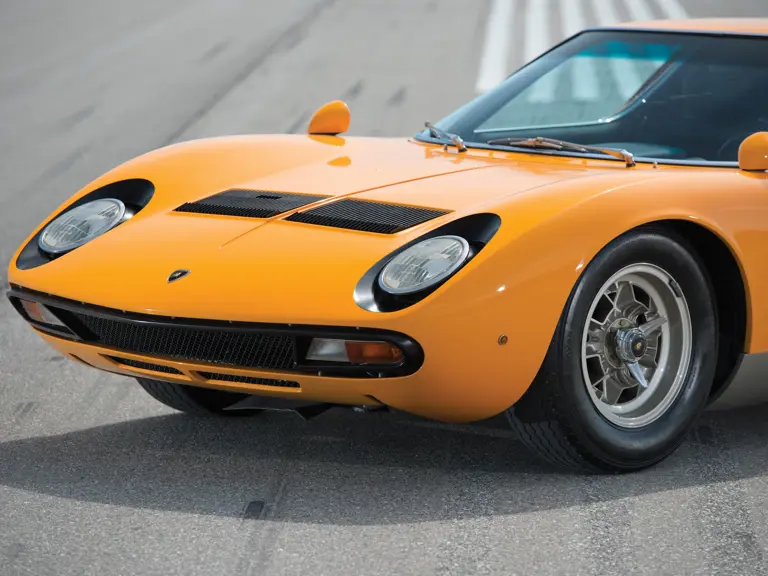
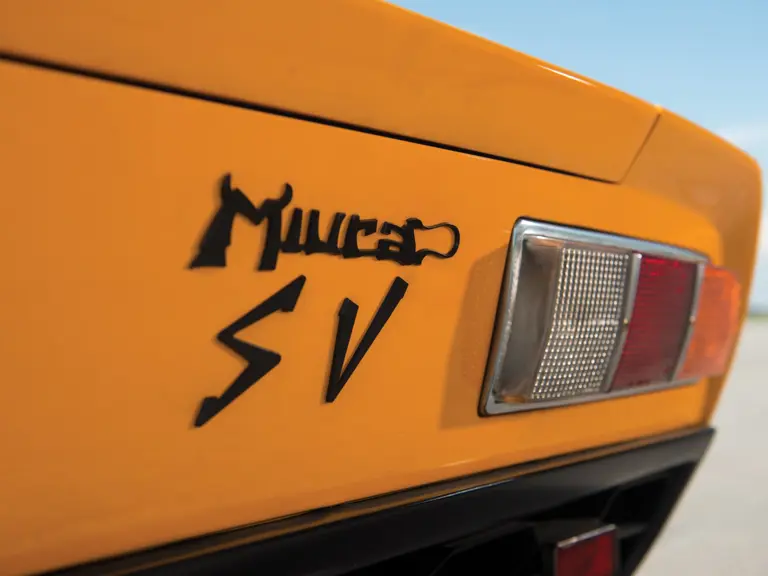
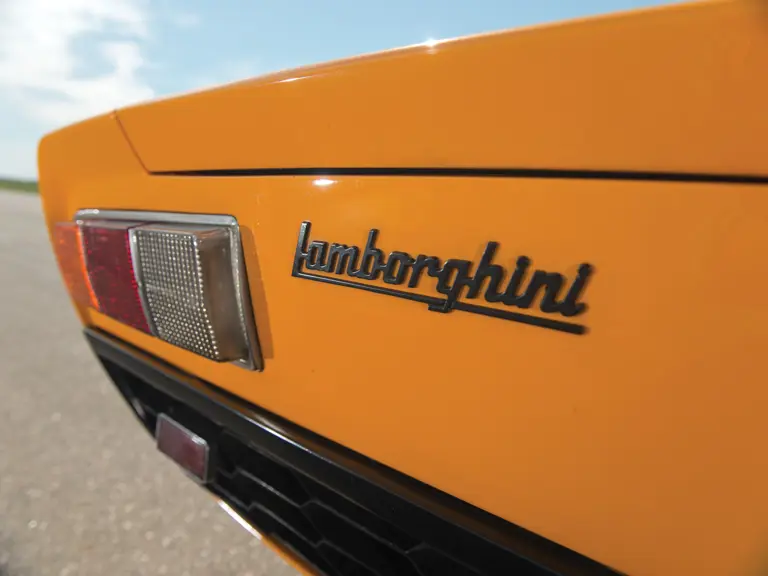
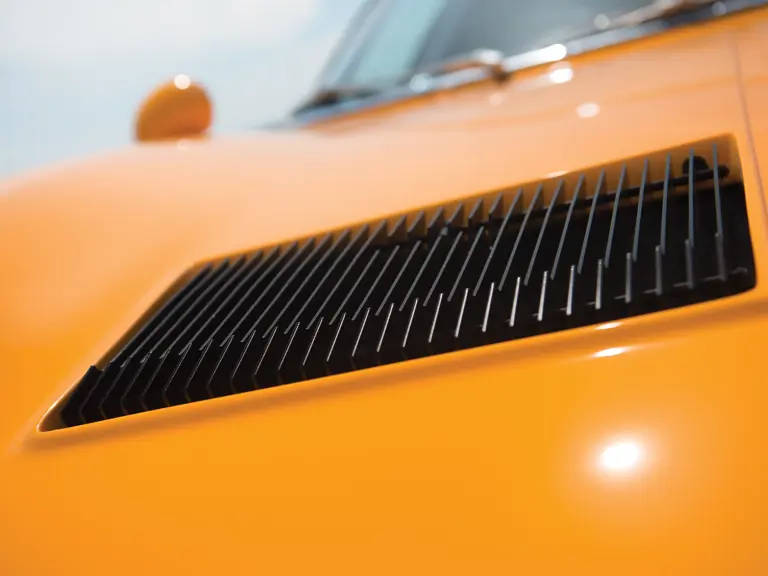
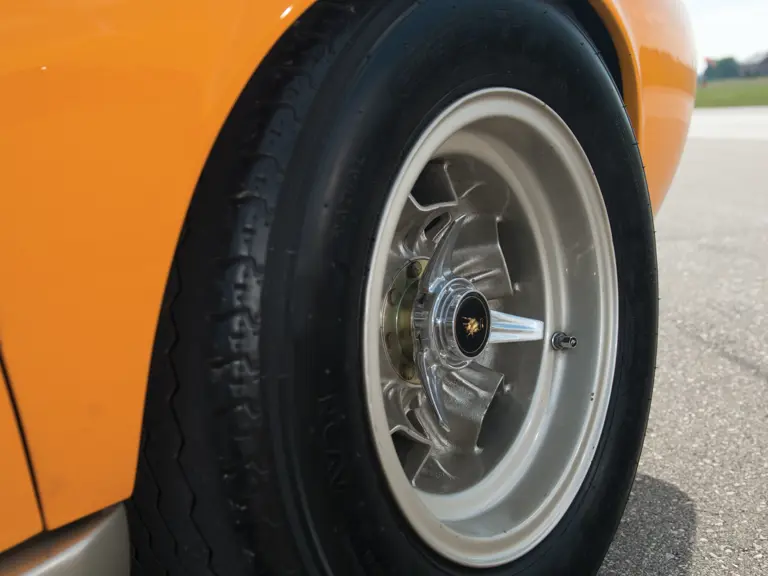

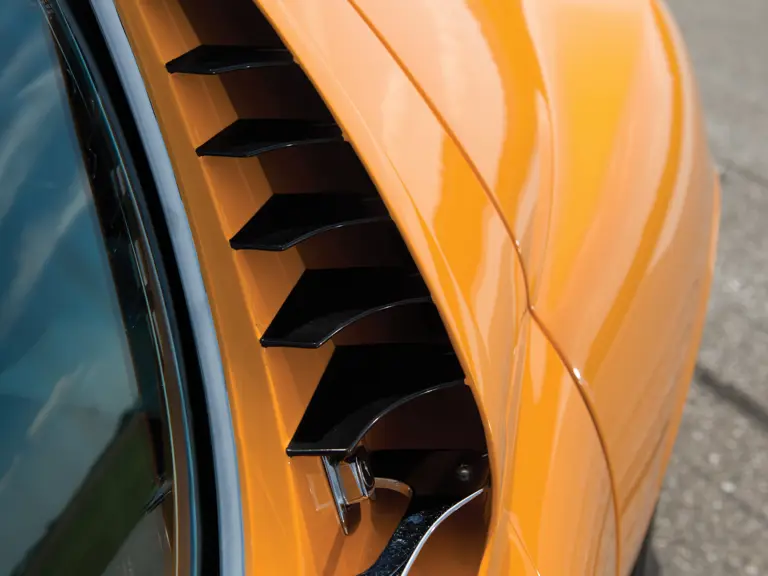
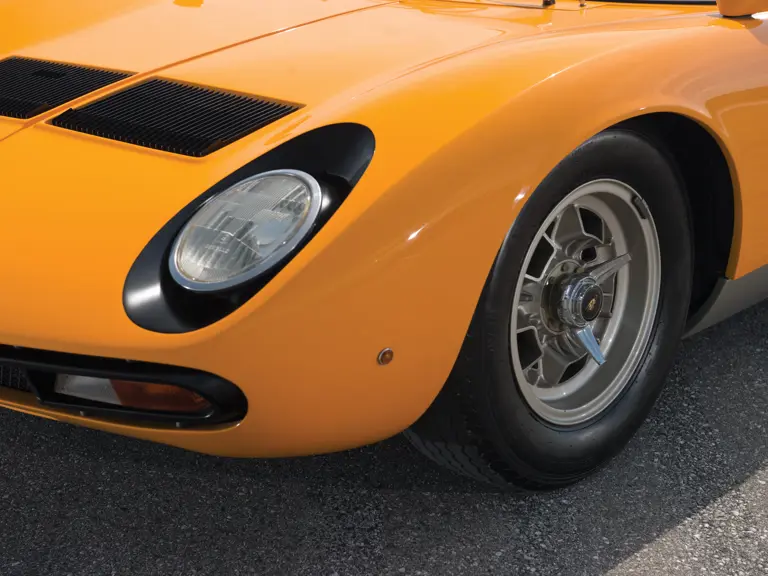


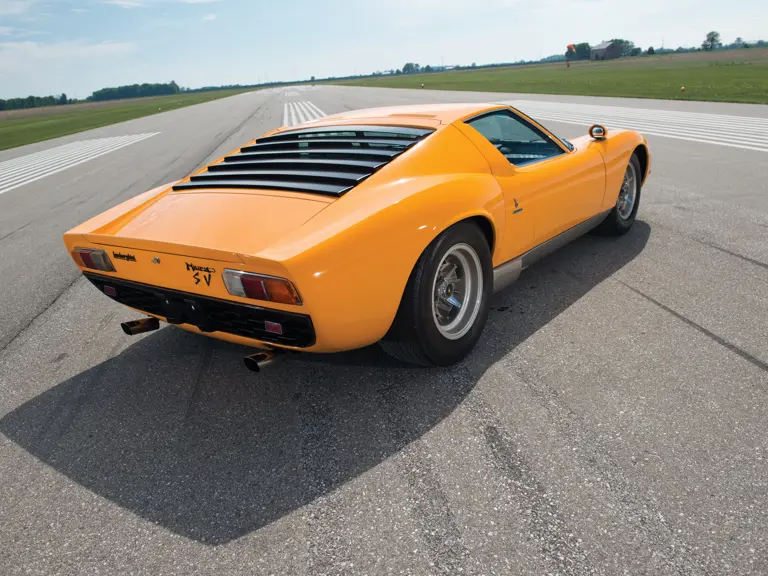

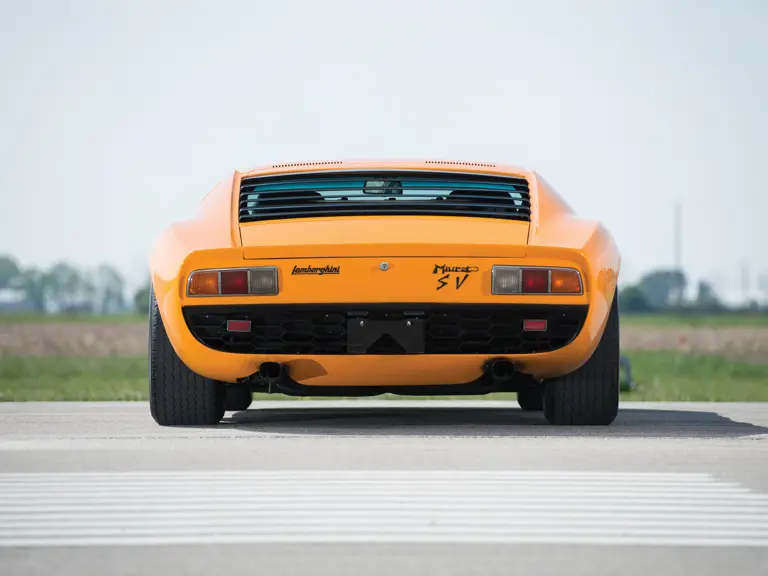
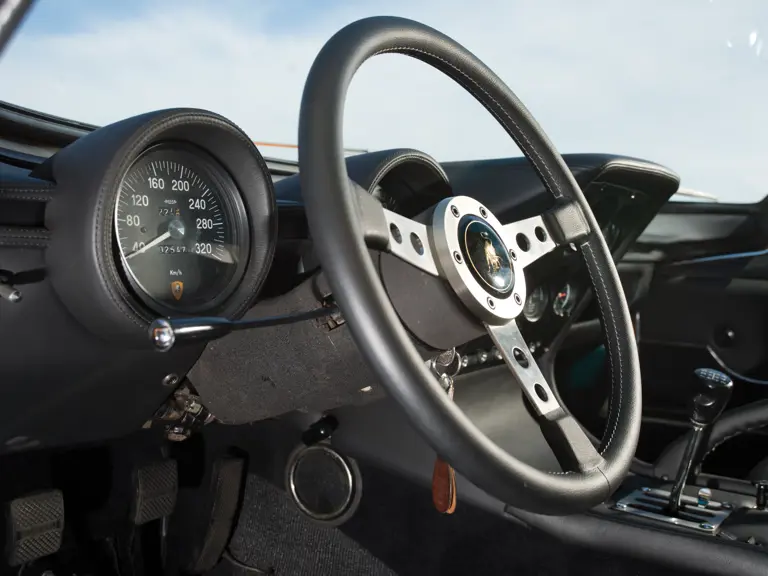

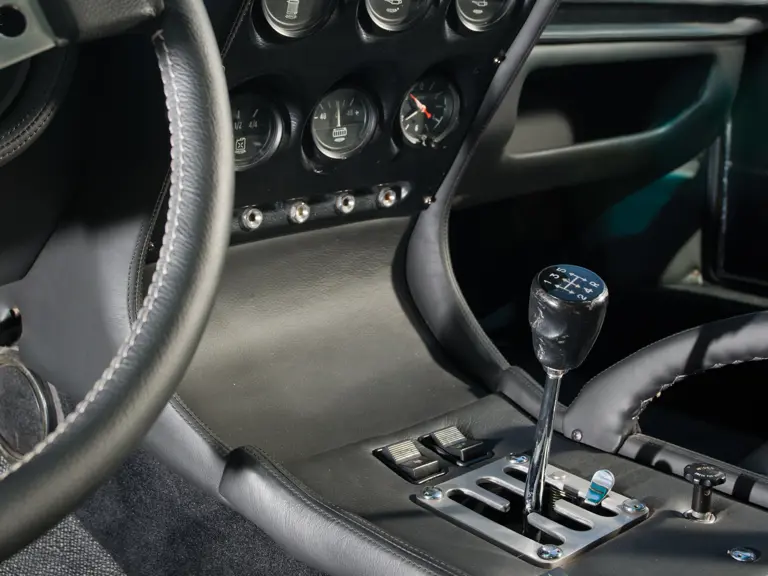

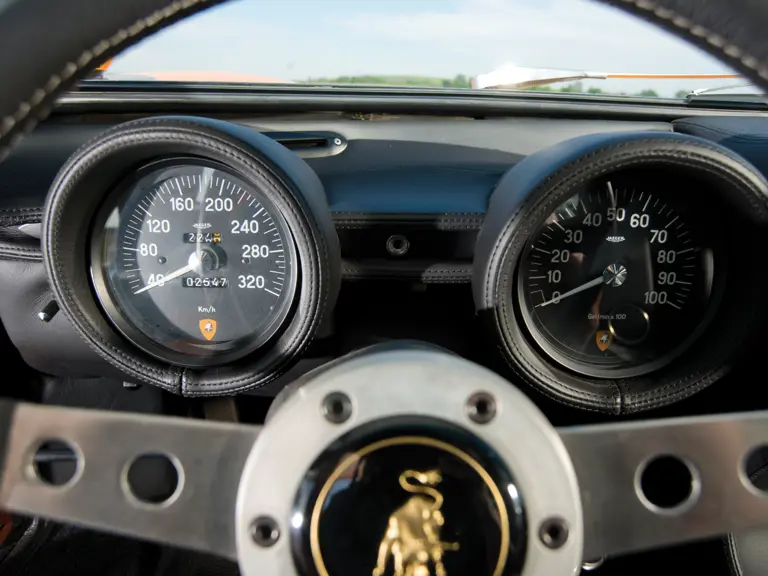
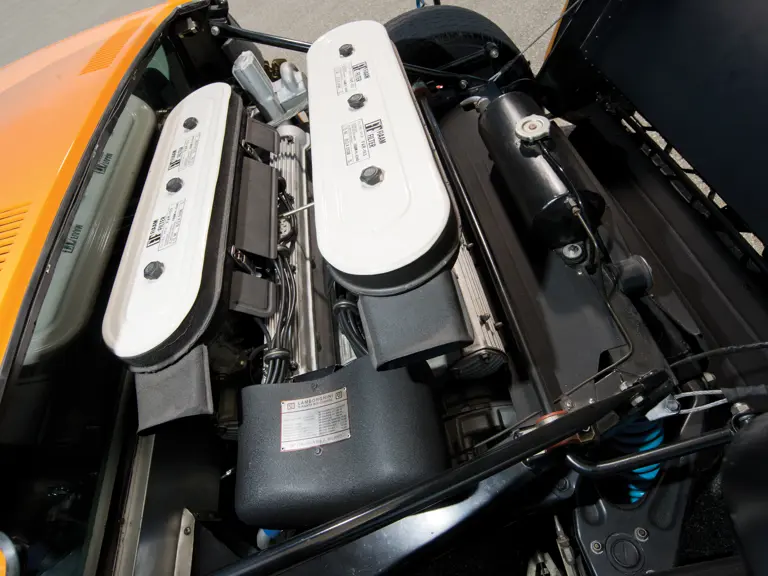


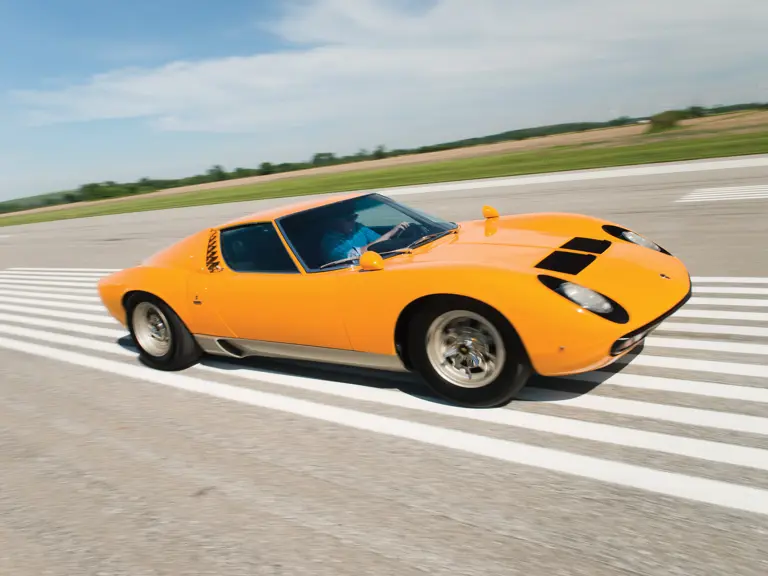
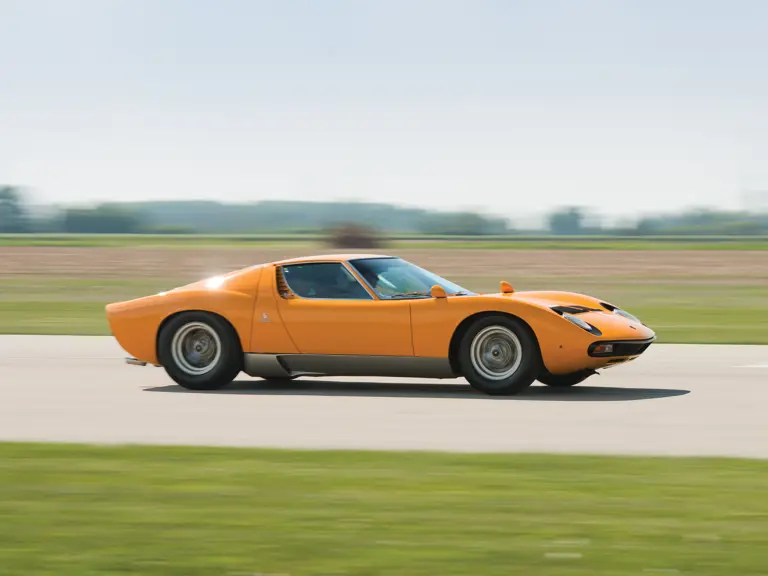
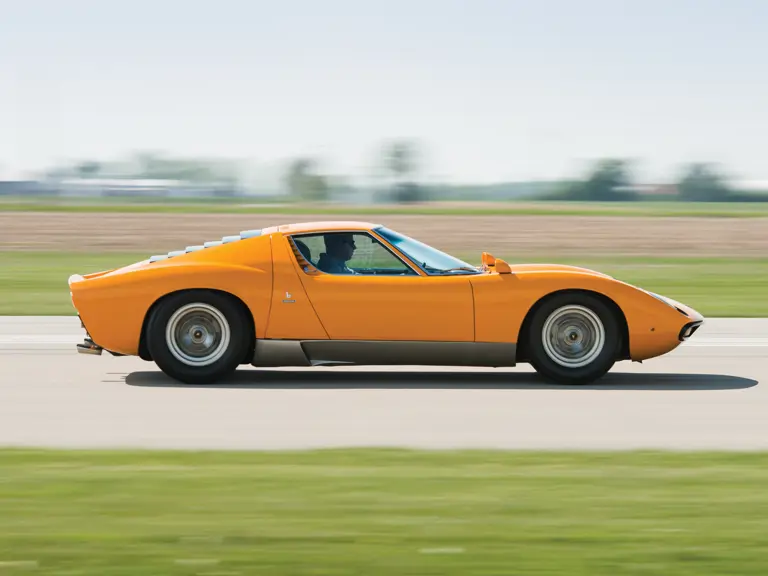
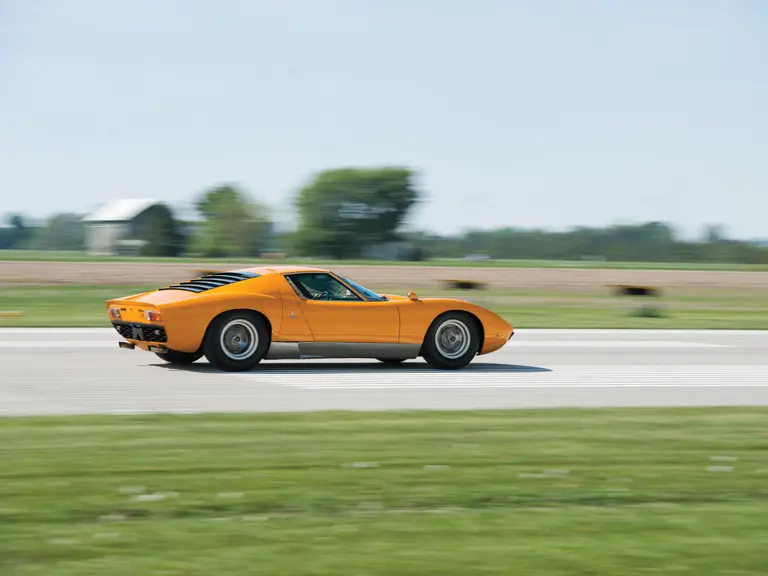

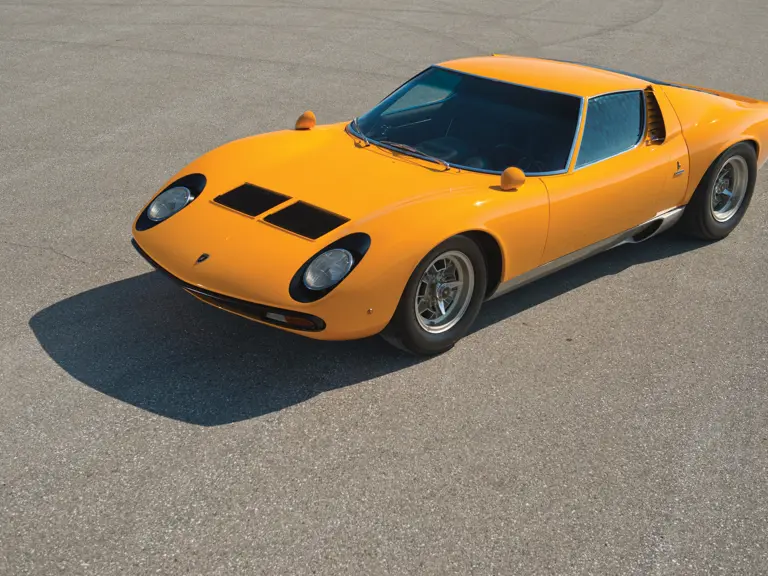
 | Monterey, California
| Monterey, California
